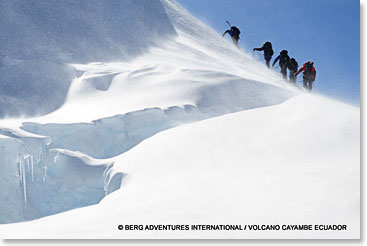
Training for Travel with Personal Trainer Terri Truman
Muscle Balance
As we prepare to take on the physical challenges of our next mountaineering adventure, consider muscle balance, and how important it is to train and maintain the correct muscle balance.
Human movement and function requires a balance of muscle length and strength between opposing muscles surrounding a joint. Normal amounts of opposing force between muscles are necessary to keep the bones centered in the joint during activity; this would be considered ‘muscle balance’. On the other hand, ‘muscle imbalance’ occurs when opposing muscles provide different directions of tension due to tightness and/or weakness.
There are two basic types of “imbalanced” conditions to watch out for. One is the opposing-muscle imbalance, where one side of a muscle group is significantly stronger than the opposing muscle. An example might be a weight lifters who only works the chest muscles (pectorals) and neglect the upper back muscles (trapezius). This will lead to a forward stoop (forward rounding) to the shoulders, and may ultimately result in discomfort, pain and degrees of joint immobility.

Climbing Cayembe, Ecuador
The other type is what I call “lateral imbalance”, where one side of the body is significantly weaker than the other. Each one of us has a more and less dominant side: depending on the body part, the difference can be considerable, especially if you’re compensating for an injury, a weak joint or it’s just plain sore. Approaching workouts as if both sides are equal is probably incorrect. The challenge is to adapt your training to compensate by exercises that promote lateral isolation. For this reason, I tend to use dumbbells instead of barbells or machines so that I can compensate for my less dominant side. I also do many “single” exercises e.g. single leg step-ups or squats… things that force me to be aware of and focus on equalizing my lateral strength.
Why is this important? During long days of climbing or hiking, our minds and bodies subconsciously take advantage of our strengths and adapt to avoid our weaknesses, taking the path of least resistance. When muscles are imbalanced, joints tends to move in that direction and are limited in the opposite direction, causing joint pain because of the two opposing tensions… not a good thing! When you maintain balanced muscles, you have better body symmetry and better posture. This will allow you to focus on enjoying your activity, and not on those nagging aches and pains.
Until next time, be good to yourself and see you in the hills.

